Pitaya and dragon fruit are the terms which are often used interchangeably, but the question arises are they really the same? In this article let’s explore and delve deeper into the fascinating world of pitaya and dragon fruit, learn their differences in terms of appearance, taste, nutritional benefits, cultivation, and global popularity.
Difference Between Pitaya And Dragon Fruit
1. Origin Of The Fruit
Pitaya
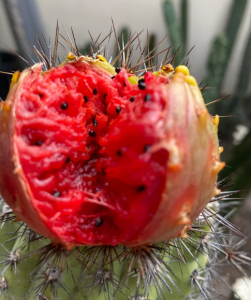
The term “pitaya” is commonly used to refer to several species of fruit-bearing cacti. Discovered centuries ago, pitaya is Native to Central America which is known for its vibrant color , spikes like exterior baby and pulpy flesh. The two most prevalent varieties are the red-fleshed pitaya, and the white-fleshed pitaya.
Dragon Fruit
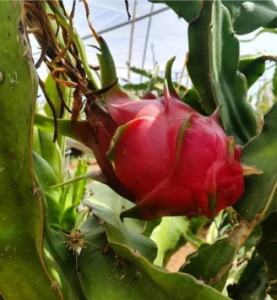 Dragon fruit on the other hand is a much more generic term mostly used in the Asian sub continents. The most popular dragon fruit varieties are the red and white-fleshed pitayas. The confusion between pitaya and dragon fruit arises from the fact that pitaya is often marketed and sold as dragon fruit in many parts of the world.
Dragon fruit on the other hand is a much more generic term mostly used in the Asian sub continents. The most popular dragon fruit varieties are the red and white-fleshed pitayas. The confusion between pitaya and dragon fruit arises from the fact that pitaya is often marketed and sold as dragon fruit in many parts of the world.
2. Appearance and Varieties
Pitaya
Pitaya belongs to the genus Stenocereus that grows on column-like cactus. The distinguishing feature of pitaya is its striking appearance. Covered in spiky, scale-like skin, pitayas can range from bright pink to yellow and some are even red, depending on the variety. The flesh inside is speckled with tiny black seeds and is either white or red, depending on the specific type.
Dragon Fruit
The slightest difference is that dragon fruit is a member of the genus Hylocereus and grows on a vining cactus. Dragon fruit, as a more inclusive term, encompasses several varieties beyond the pitaya. Some dragon fruits have yellow skin with white flesh, while others have vibrant pink or red skin with red or white flesh. The fruit's outer appearance can vary significantly, and this variety contributes to the confusion between pitaya and dragon fruit.
3. Flavor Profile and Texture
Pitaya
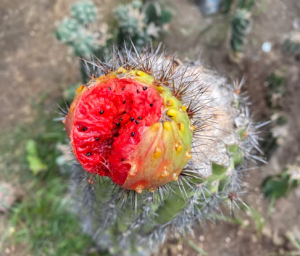 Pitaya has a mildly sweet taste with subtle undertones reminiscent of watermelon. The texture is often likened to kiwi, featuring tiny, edible black seeds scattered throughout the flesh. The flavor profile can vary slightly between red and white-fleshed pitayas, but for most parts it is almost tasteless.
Pitaya has a mildly sweet taste with subtle undertones reminiscent of watermelon. The texture is often likened to kiwi, featuring tiny, edible black seeds scattered throughout the flesh. The flavor profile can vary slightly between red and white-fleshed pitayas, but for most parts it is almost tasteless.
Dragon Fruit
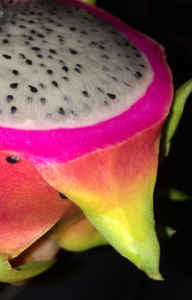 Dragon fruit, encompassing various varieties, can display a broader range of flavors. While some may have a mildly sweet taste similar to pitaya, others are on the tangy or even slightly sour side. The texture is slightly crunchy, and the black seeds are similar to those found in pitaya.
Dragon fruit, encompassing various varieties, can display a broader range of flavors. While some may have a mildly sweet taste similar to pitaya, others are on the tangy or even slightly sour side. The texture is slightly crunchy, and the black seeds are similar to those found in pitaya.
4. Nutritional Content and Health Benefits
Pitaya
Pitaya, in both its red and white varieties, is a rich source of essential vitamins and minerals. It is particularly high in vitamin C, antioxidants, and fiber. The fruit is known for its potential benefits in boosting the immune system, improving digestion, and promoting healthy skin.
Dragon Fruit
Dragon fruit is nutritionally dense. It contains vitamin C, B vitamins, iron, and other antioxidants. It is high in fiber content which promotes better digestion and the presence of vitamin C contributes to immune system support. Having said that, the exact nutritional profile can vary depending on the specific variety of dragon fruit.
5. Cultivation and Global Presence
Pitaya
Pitaya cultivation often involves climbing cacti that require a warm, tropical climate. Countries such as Mexico, Vietnam, and Thailand are significant producers of pitaya. The fruit's popularity has surged globally due to its unique appearance and nutritional benefits.
Dragon Fruit
Dragon fruit, being a broader category, is cultivated in various regions worldwide. While pitayas are a prominent subset of dragon fruit, other varieties, such as the yellow dragon fruit, are grown in Southeast Asia and Central America. The fruit's adaptability to different climates has contributed to its widespread cultivation.
6. Global Popularity and Culinary Uses
Pitaya
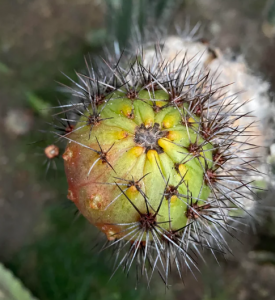 Pitaya is commonly consumed fresh, added to smoothie bowls, or used in fruit salads. The vibrant color, nutritious value and unique texture make it a favorite among health-conscious consumers and food enthusiasts.
Pitaya is commonly consumed fresh, added to smoothie bowls, or used in fruit salads. The vibrant color, nutritious value and unique texture make it a favorite among health-conscious consumers and food enthusiasts.
Dragon Fruit
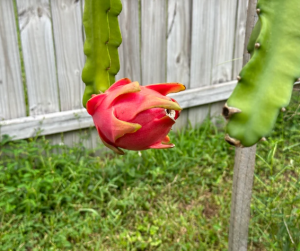
Dragon fruit, with its diverse varieties, has a global appeal. It is a versatile ingredient, featuring in a range of dishes, from tropical fruit salads to exotic cocktails. The visually stunning appearance of dragon fruit has contributed to its popularity in culinary circles, where it is often used as a garnish or a central ingredient in creative recipes.
Conclusion
To sum up, dragon fruit and pitaya, although the two terms are used interchangeably, technically speaking dragon fruit and pitaya are not the same. They are very closely related and have many similarities in terms of taste, appearance, and texture.
The term “dragon fruit” has become a more popular and general term that is now commonly used to refer to any variant of the fruit in this family of fruits. So if you see someone referring to the fruit as “dragon fruit,” “pitaya” or “pitahaya,” they're typically all referring to the same fruit. Majority of the time, what you'll find in most grocery stores are actually dragon fruit rather than pitaya or pitahaya.
























